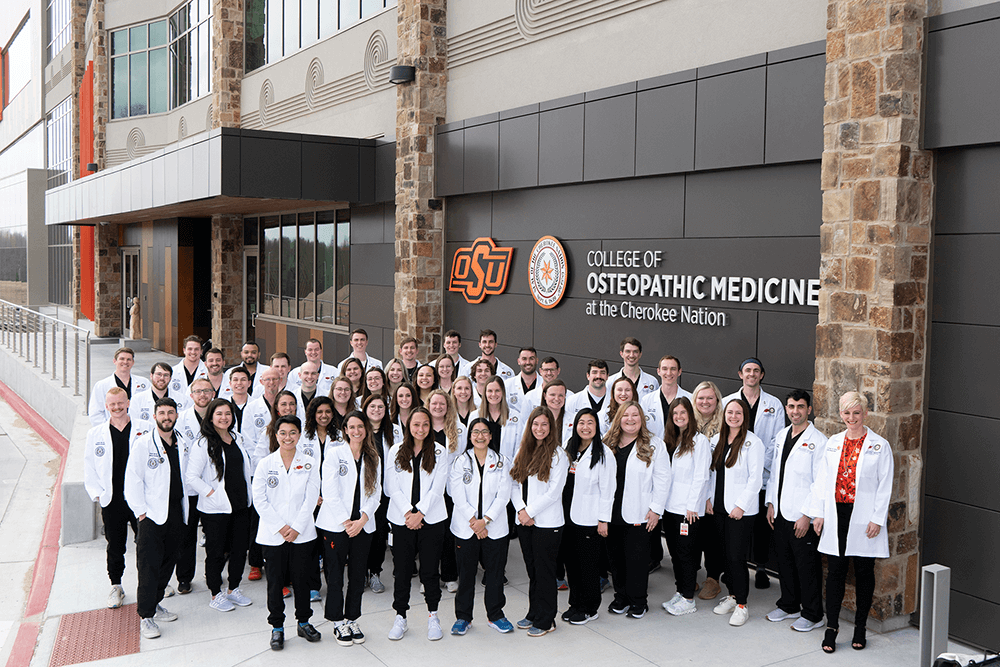OSU COM at the Cherokee Nation

The Nation's Only Tribally Affiliated Medical School
Oklahoma State University Center for Health Sciences and the Cherokee Nation have
partnered together to establish the nation’s only tribally affiliated medical school.
The medical school is located in the capital of the Cherokee Nation in Tahlequah,
OK.

I believe that this partnership will advance quality health care for all by allowing us to teach a new generation of medical professionals to serve our communities for years to come. I wish each and every student the best as they begin this journey. They have our full support.
- Chuck Hoskin, Jr.
Cherokee Nation Principal Chief
Cherokee Nation Principal Chief
Learning Environment
The 85,000-square-foot medical school includes anatomy, clinical skills, osteopathic
manipulative medicine and standardized patient labs. It also features a simulation
center with computer programmable manikins. The facility also includes lecture halls,
classrooms, faculty offices, study carrels, break room and a wellness center.
COM at Cherokee NationBy the Numbers
107
Students
>11
Federally recognized tribes represented in student body
31
Of Oklahoma counties represented
About Tahlequah
The historic town of Tahlequah was established by the Cherokee people before Oklahoma
statehood. It is the oldest municipality in the state by virtue of an incorporation
act by the Cherokee National Council of 1843.
From hiking and paddle sports to historic attractions and camping, the Tahlequah area
has opportunities for any interest that gets you moving. Because of its unique location
near Tenkiller Lake, the Illinois River and halfway between Tulsa and Fayetteville,
AR, residents are never far from adventure.
Osiyo!
Osiyo, that's the way to say hello in Cherokee. The Cherokee Nation is a sovereign tribal government. Today, the Cherokee Nation is one of the largest tribes in the United States with more
than 413,000 tribal citizens worldwide. With 140,000 Cherokee Nation citizens residing
within the tribe’s reservation in northeastern Oklahoma, it’s more important than
ever to educate future doctors in the area.
The importance of education has been a guiding philosophy of the Cherokees in Tahlequah
since the establishment of the Cherokee Male and Female Seminaries in 1851. Since
that time, the Cherokee Nation has made a deep investment in educating the next generation
of educators and is now furthering that investment to better the health of all on
the Cherokee Reservation.
Rural, Tribal, Ready
Training in Tahlequah provides the perfect incubator for primary care physicians to
practice in rural Oklahoma. With a significant rural and tribal population in the
state, understanding the unique social determinants of health that exist in Tahlequah
translates into better care for all Oklahomans and members of all Oklahoma tribal
members.
Tribal Medical Track
The Tribal Medical Track prepares medical students for a primary care residency at
tribal facilities and a successful practice in tribal, rural and underserved Oklahoma.
The tribal medical track offers unique learning opportunities for motivated students
to fully develop their skills, knowledge and abilities to succeed in a challenging
practice environment while learning about the rich cultures of American Indians.
